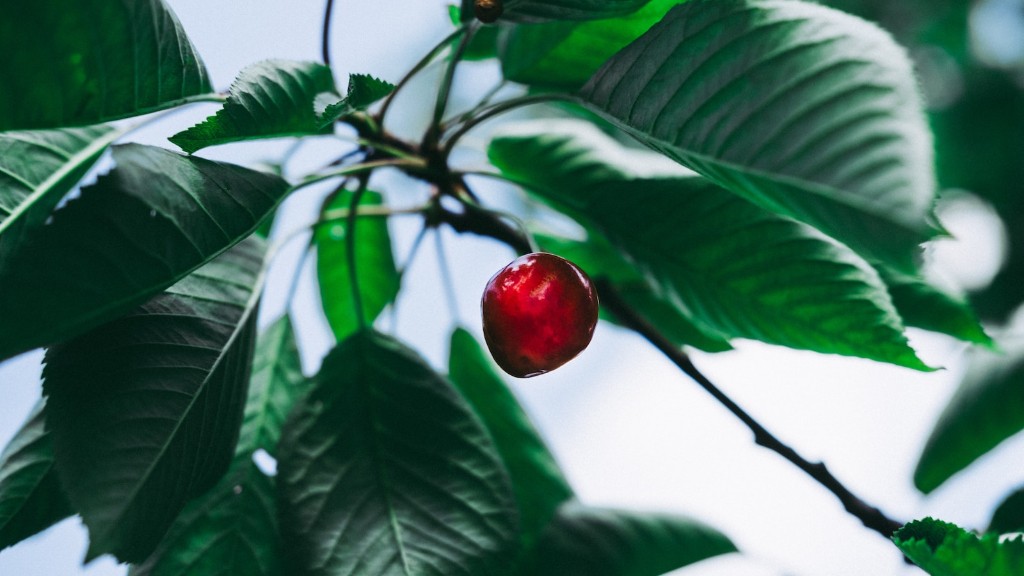Location
Avocado trees need a sunny spot to flourish, so they can’t thrive in the shade. Planting too deep can result in a stagnant root system, but if the avocado tree is planted at the right depth then it will be healthier and absorb nutrients more easily. The soil type tomatoes and other vegetables prefer, is ideal for avocado trees as it is well-draining and nutrient-dense.
To ensure your avocado tree will establish a good root system, consider adding organic matter to the soil to make it loamier. If there is a concern about the pH levels of the soil, add some soil sulfur in small amounts over time to reduce the alkaline levels. Avocado trees usually like a mix of slightly acidic to neutral soil, between a pH of 6-7.
Temperature
Avocados love warm, dry weather. Unfortunately, they don’t seem to do well in areas with cold winter months, like parts of the United Kingdom, because the roots cannot take the frost. So, make sure to select a location sheltered from the harsher autumn and winter weather. The tree should tolerate temperatures as low as -2 degrees Celsius, so keeping it well-mulched during the colder season may help its survival.
In the warmer months, you should focus not only on the tree’s temperature, but also on its water supply. Avocado trees need a consistent supply of water to grow and bear fruits. Depending on the size of the tree, you should water it at least three times a week.
Budding, Pollination and Fruiting
Avocado blossoms require the help of pollinators. Usually, they can be found in the form of bees, insects, or hummingbirds. Planting flowers, like hibiscus, can attract pollinators. Lastly, as avocados are early flowering, cover the tree lightly with a net to protect the blossoms and prevent birds from eating the fruit before it matures.
Avocado trees can fruit a few years after being planted, but the amount of yield depends largely on the tree’s size and the method of propagation. Grafted avocados can start to fruit within two or three years, while trees grown from seedlings can take up to five years, depending on their size.
Pruning, Harvesting and Storage
Regularly prune the crown of your avocado tree to allow for more light and heat to flow through, but avoid pruning more than 25% of the tree in one go. This will reduce the risk of sunburn and over-pruning. To harvest the fruit, remove it from the tree using clippers or even scissors, enough to not damage the stem. You will know the avocados are ready to be harvested when they have deep green or purple skin.
Once harvested, avocados can be stored at room temperature until they are ready to be eaten. Depending on the variety, some avocados ripen faster than others, allowing you to experiment and see what works best for each crop.
Disease and Pest Prevention
Like most fruit trees, avocado trees are prone to pests and diseases. The most common ones include cucumber beetle, avocado root rot, anthracnose and scale insects, which can cause considerable foliage damage and create an unhealthy environment. To keep your tree healthy, regularly inspect the leaves and if any of these pests or diseases are spotted, treat them promptly with an appropriate insecticide or fungicide.
Additionally, be sure to use copper fungicide and supplemental calcium to help the tree fight off avocado root rot. This will protect the root system, increase the soil water-holding capacity, improve nutrient uptake and prevent the tree from becoming unhealthy.
Fertilization
If you want to ensure the tree’s health and fruiting performance, fertilizing your avocado tree is key. This should be done after each fruiting season, using a water-soluble, nitrogen-rich fertilizer. Nitrogen is essential for healthy growth, so it is preferable to use a fertilizer with a higher rate of nitrogen
Fertilizing is especially important for immature avocado trees, as deficiencies of essential nutrients – such as nitrogen, phosphorus, and potassium – can impair tree growth, slow the flowering and fruiting processes, and eventually cause permanent damage.
Spacing
To allow for proper air circulation and good yields, avocado trees need enough space to spread out their roots. If planted too close to other trees or structures, they become restricted and increase the risk of disease and reduced yield. As a general rule of thumb, it is advisable to plant your avocado tree at least 2 meters away from other large trees or fences.
Pest Control and Disease Management
The main pests affecting avocado trees are aphids, scale insects, mango caterpillars, and whitefly larvae. While beneficial insects, such as ladybugs, may prey on the pests, it is important to check your tree regularly and spray an appropriate insecticide if needed.
For disease control, copper fungicide can be useful for preventing common diseases such as anthracnose and rust. Applying copper fungicide before rainy season is especially advantageous for mature trees.
Mulching
Mulching is a crucial step in helping your avocado tree thrive and bear fruits. It suppresses weeds, prevents soil erosion and helps maintain consistent soil temperature and moisture. The best type of mulch for avocado trees is organic mulch, as it quickly breaks down to create a nutrient-rich environment. You need to regularly replace the mulch from one season to the next, as it decomposes over time.
Tree Maintenance
Regular tree maintenance is essential for a healthy and productive avocado tree. The branches should be pruned regularly to remove any dead or diseased branches and to allow more sunshine and air to reach the entire tree. Early pruning helps promote abundant growth and a more compact shape.
In order to protect the tree from severe weather damage, providing it with a strong support structure, such as stakes and trellises, is important. Furthermore, maintaining the soil pH with lime as needed, can help protect the tree against nutrient deficiencies.
Irrigation
Avocado trees need a regular supply of water in order to bear fruit and remain healthy. It is recommended to water the trees twice a week, but this can depend on the size of the tree and its location. Watering should be adjusted accordingly during the hotter summer months, while limited water should be supplied during the colder seasons.
Additionally, keeping an irrigation system that delivers a consistent flow of water can save time and energy. Installing an efficient drip irrigation system, with a timer and sensors to adjust the flow rate and frequency, can help to ensure that your avocado tree is getting the required amount of water without being over-watered.
Weed and Insect Control
Weeds can compete for nutrients with avocado trees and can significantly reduce yield. Therefore, it is important to remove weeds and other unwanted plants from the area regularly. Avoid using any toxic weed killer, as it can damage the avocado tree’s root system. Instead, you can use herbicides for spot treatment of the weed, and natural methods such as hand-weeding and mulching to prevent new weeds from emerging.
Insects can cause considerable damage to an avocado tree’s leaves and fruit, reducing its productivity and quality. Therefore, it is important to identify the insect and treat it with the appropriate pesticide. You can also attract beneficial insects, such as ladybugs, that prey on destructive species.
Fruit ripening
When it comes to when and how to harvest the fruit, all avocados will not be ready to be picked at the same time. Check the color of the skin and if it has reached a dark green or purple hue, then it is ready to be picked. Once harvested, avocados can be stored at room temperature for a few days until they ripen.
Furthermore, in order to ripen the fruit in the fastest way possible, you can put them in a bag with an apple or banana. These fruits naturally emit ethylene gas, which helps in hastening the ripening process. As an extra tip, you can store the unripe avocados with a paper towel to prevent moisture loss and odors from other fruits.
Harvesting
When it comes to harvesting, the best way to do it is to use clippers or scissors. Cut the avocado fruit off the branch gently to not damage it, and if the fruit is still green use your hands or a branch pruner to remove it. If the branch or rootstock gets damaged while harvesting, then use a sharp utility knife to prune it away.
Harvesting is an important activity that requires careful attention. Make sure to take note of the volume and size of fruit to be harvested as this can influence the next crop’s size and fruit quality. Furthermore, when storing the harvested fruit, be mindful to store them in a cool and dry place, away from wind and sun.
Storing and Selling Avocados
Once the fruit has been harvested, avocados need to be stored properly to ensure top quality and maximum shelf-life. Avocados can be stored at room temperature for a few days, or for longer in a refrigerator, where this will stop the ripening process. It is important to note that once the fruit is ripe, it should not be stored with other fruits or vegetables as this can lead to early ripening and deterioration.
If you have excess avocados, consider selling them to local or online stores. As the demand for avocados is continuously increasing, you can easily make a positive business out of your avocado tree. That said, it is important to research the regulations in the area you plan to sell the fruit, to ensure you are compliant with the relevant relevant legislation.

